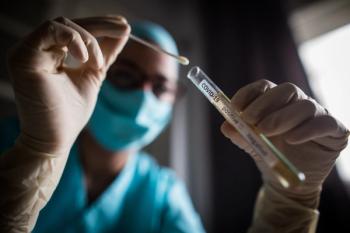
When seconds count, pharmacists can make the difference
Cardiac arrest code teams need pharmacists. Here's why.
Seconds count in any code emergency. When pharmacists are members of cardiac arrest code teams, they can be instrumental in saving lives, said two presenters at the 2015 ASHP Midyear Clinical Meeting in New Orleans. Aaron Steffenhagen, PharmD, BCPS, is pharmacy manager, Patient Care Services, at the University of Wisconsin Hospitals and Clinics, and Andrew M. North, PharmD, BCPS, MBA, is specialty practice pharmacist, Emergency Medicine, at The Ohio State University Wexner Medical Center.
“Pharmacist participation in cardiopulmonary code resuscitation events is directly linked to better-quality care and lowered mortality,” said North.
The first report of pharmacist involvement took place in the late 1960s, he said, but by the mid-1990s, a survey of directors of pharmacy found that “27% of institutions had pharmacists involved with code response.” Since then, participation has continued to grow.
“One aspect of pharmacist value on the code team is to understand what is on the crash cart and where each item is located. Pharmacists are frequent responders, and they must know what’s available to the code team and ensure it is accessible.”
How important is this? “Any intervention can be delayed with unfamiliarity, and even if it’s a couple of seconds, knowing the medications - where they are and the proper doses - these are a supplemental and favorable value to code team members.”
Linking data to treatment
Pharmacists also can add provide a dimension of scrutiny that may otherwise be overlooked.
For example, in the assessment of a code started en route to the hospital, the pharmacist may discover that a diabetic patient has been on dialysis or has missed important doses of medication. This is crucial information “that can bring life-saving treatments that otherwise may not be considered,” said North.
“The pharmacist can be extremely instrumental in collecting information by talking with family and friends, and reviewing data from the EMS report and other outside records to learn current and past medications, allergies, and other important history factors.”
The recorder’s role
Aaron SteffenhagenIn his presentation, Steffenhagen also addressed the importance of gathering information.
“The role of recorder is very important. The pharmacist can capture real-time data related to the event and also, at the end of the code, determine whether all the equipment, medicine, and required items were available. If there is a medical need, it can be documented. With a pharmacist recorder, we can track what we’re using and make adjustments if we need to add more medicines or other supplies to the tray.”
Pharmacists also can help coordinate good communication and crowd control. “This is imperative. You can’t have too many people crowding around. There has to be a code team leader and responsibilities clearly identified for each participant.”
Quality improvement
Steffenhagen pointed to another need that pharmacists could help to fill. Without standardized data and accreditation for national cardiac arrest, code protocols can be all over the map, he said. “Hospitals currently have no national accreditation or national cardiac arrest database, and we need both.”
A recent Institute of Medicine (IOM) publication suggested that the Joint Commission on Accreditation of Health Organizations (JCAHO) should implement these standards. “The pharmacist can play a role in this effort,” said Steffenhagen, “since the data on interventions for better outcomes, collected in real time, can help create reproducible metrics.”
Sharing hospital results of resuscitation in a national cardiac-arrest registry, he added, would foster processes for staff training and development of code protocols that could improve these outcomes.
Pharmacists should take the lead, said Steffenhagen. “Be bold; go see how you can improve the cardiac arrest rate. Talk to the leaders of the cardiac arrest team and learn what they do well and where there is need, and find your role to optimize outcomes.”
Both presenters stated that pharmacists should be prepared for the cardiac code response through certification training offered by Advanced Cardiovascular Life Support (ACLS) and Pediatric Advanced Life Support (PALS) courses. It has been shown that pharmacists trained in ACLS drug treatments not only reduce mortality; they increase correct drug treatment efficiency by nearly 35% during code events, with overall guideline adherence improving 27.4%.
Barbara Hesselgrave is a freelance writer based in Baltimore.
Newsletter
Pharmacy practice is always changing. Stay ahead of the curve with the Drug Topics newsletter and get the latest drug information, industry trends, and patient care tips.













































































































































